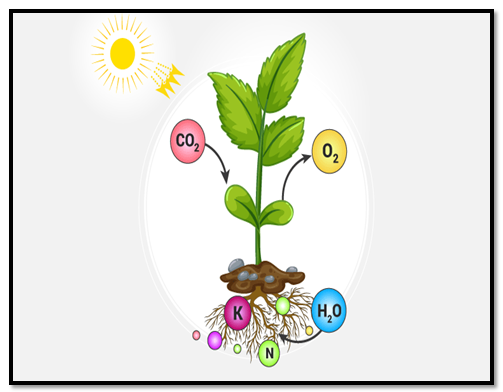
Mineral nutrition is the study of the processes by which plants obtain, metabolise and use the mineral elements necessary for growth and development. Plants absorb minerals through their roots from the soils, where they are primarily present in the form of inorganic ions.
Symbioses formed between roots and bacteria or between roots and fungi (mycorrhiza) help to acquire these mineral elements. Bacteria and Fungi join forces with the roots to dissolve the minerals and make them accessible to the plants.
The quantities of each element required by plants can be used to define them as being either macro- or micro-nutrients. The elements that are essential for growth serve both structural and biochemical roles in the plant and many have multiple functions. It is difficult to specifically classify the role of each nutrient, but they can be placed into general types based on function. Type I nutrients are bound into the structure of carbon compounds, such as nucleic acids and proteins. Type II nutrients are required for energy storage and transport. Type III nutrients are linked with cell wall structure and Type IV are integral as constituents of enzymes or other molecules required for metabolism (e.g. chlorophyll and ferredoxin). Type V can activate enzymes or control their activity and Type VI nutrients serve as major cellular osmotica.
The aim of the study of plant mineral nutrition is to reason fertilization and assess the mineral requirements of plants.
- Enseignant: Admin User